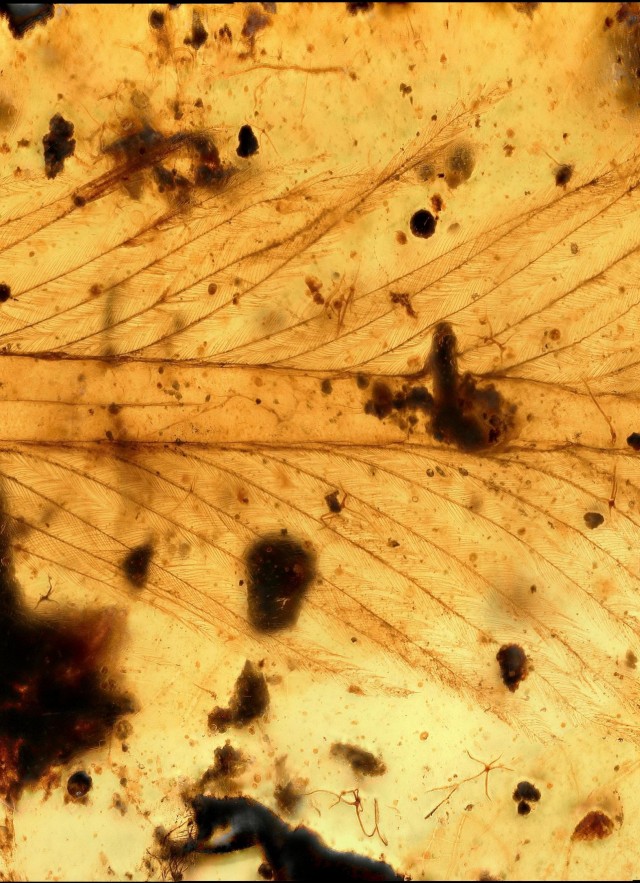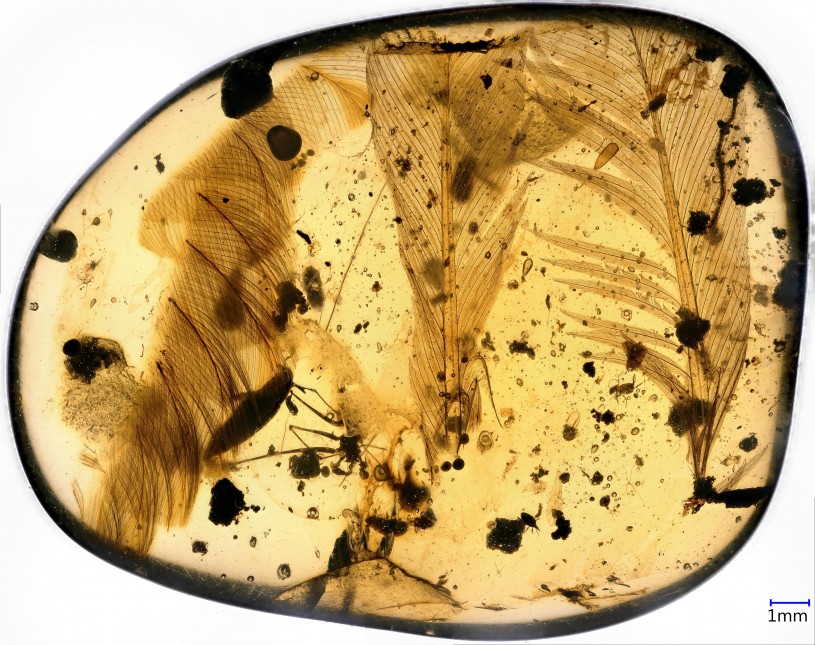BE ADVISED: On Saturday, April 26 and Sunday, April 27, nearby events at Exposition Park and the University of Southern California will impact traffic, parking, and wayfinding in the area. Please consider riding the Metro E (Expo) Line and exiting at USC/Expo station.
A Story in Amber


Frozen in time, animals trapped in amber can tell us much about the past. Some of our collections include amber-encased dinosaur feathers from more than 100 million years ago. Using these specimens, NHM’s Dinosaur Institute researchers discovered just how different ancient feathers are from their current counterparts. Using modern technology like microphotography and CT scans, scientists got an up-close and 3D look at the inside of ancient feathers. While modern bird plumage has a central shaft filled with a spongy material, these 100-million-year-old fossils showed a different structure—a thin shaft with no spongey stuff inside! It’s a type of feather we just don’t see anymore. This extinct structure suggests that they grew completely differently from how feathers grow today. Thanks to an ancient sticky situation and modern technology, we are learning more about dinosaurs every day.
Learn more by reading this study published in the journal Scientific Reports.
About the author: Dr. Luis M. Chiappe
A vertebrate paleontologist and the Gretchen Augustyn Director of the Dinosaur Institute, Dr. Chiappe has conducted extensive research on the evolution of dinosaurs, from their reproductive behavior to their evolutionary connection with birds.
